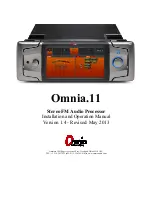
Hardware description
5.15.5 Resetting t
macro pro
et (
ResultPtr
);
r
iming:
ore.
Description:
Resets the SmartMedia device. You can reset the device at any time; the reset
operation is the only one that can be run ignoring the busy status returned by the
ing S
ers:
bytes of type
unsigned 27
.
urns 0 for success, 1 for
Timing
Description:
ck address resides in the top
18 bits. For cards with 32 pages per block, the block address is in the top 17 bits.
Ï
RC200SmartMediaErase()
performs an erase on the entire block, regardless of page or
he SmartMedia
extern
c RC200SmartMediaRes
Parameters:
ResultPtr
: Pointer to register of type
unsigned 1.
Returns 0 for success, 1 fo
failure.
110 clock cycles or m
T
SmartMedia device.
5.15.6 Eras
martMedia memory
extern macro proc RC200SmartMediaErase (
Address
,
ResultPtr
);
Paramet
Address
: Block address in
ResultPtr
: Pointer to register of type
unsigned 1
. Ret
failure.
250 clock cycles or more.
Performs an erase on the entire block set by
Address
.
Note that for 16 pages per block (4/8MB cards) the blo
You can check how many pages there are in a block in your card using
RC200SmartMediaIsBlock32Pages()
.
column number.
5.15.7 Number of pages per block
extern macro expr RC200SmartMediaIsBlock32Pages ();
You can determine whether your SmartMedia device has 16 or 32 pages per block by calling
ression returns a true condition for cards that are 32
pages per block, and a false denotes 16 pages. The expression will only return valid results after a
5.15.8 o
The RC
0
dressing. The
•
It skips bad blocks, avoiding the risk of reading or writing invalid data.
RC200SmartMediaIsBlock32Pages()
. This exp
successful call to
RC200SmartMediaInit()
.
L gical and physical addressing
20 PSL allows you to perform reads and writes using physical or logical ad
advantages of using logical addressing are:
•
It preserves the CIS (Card Information Structure) and IDI (ID information) fields. If you
overwrite these fields, the SmartMedia card may not work with other hardware.
www.celoxica.com
Page 60
















































